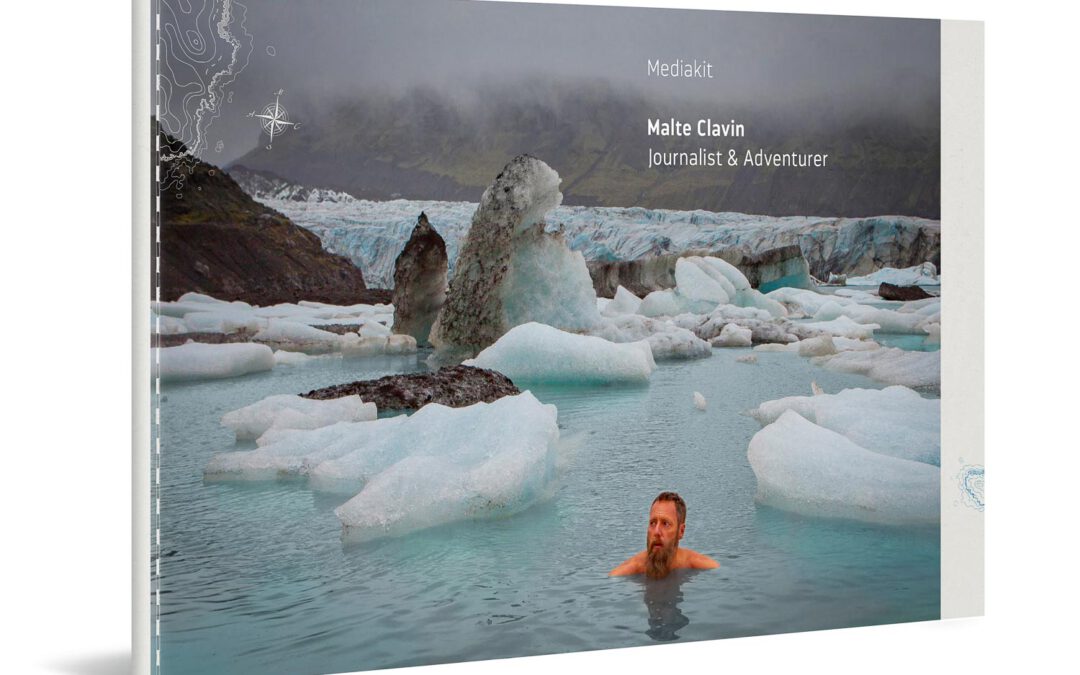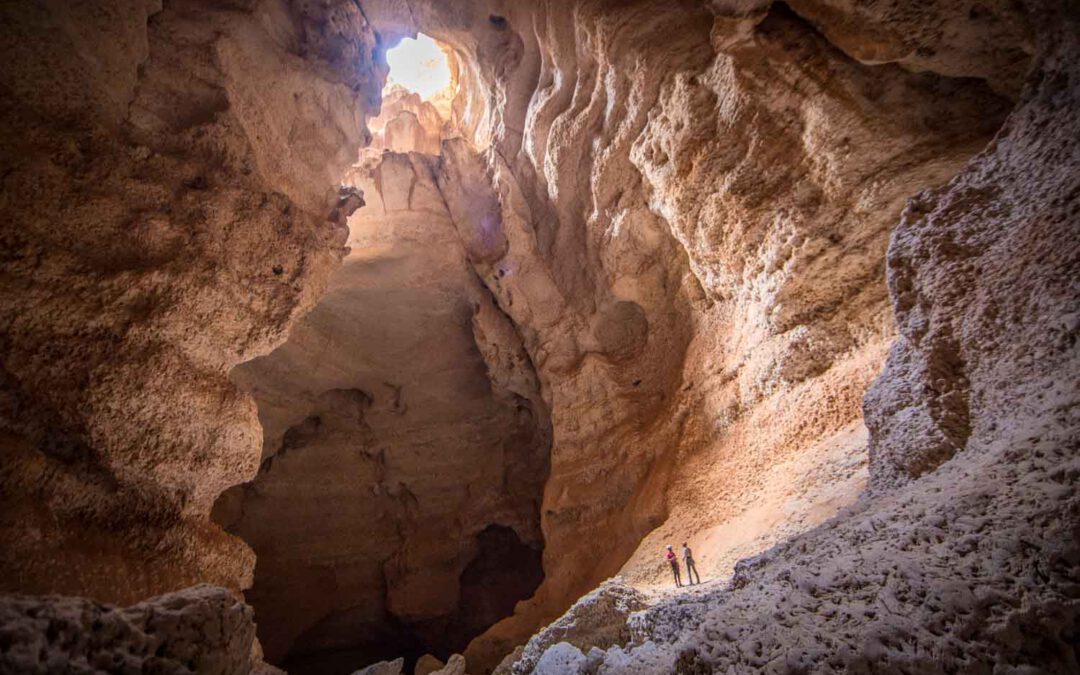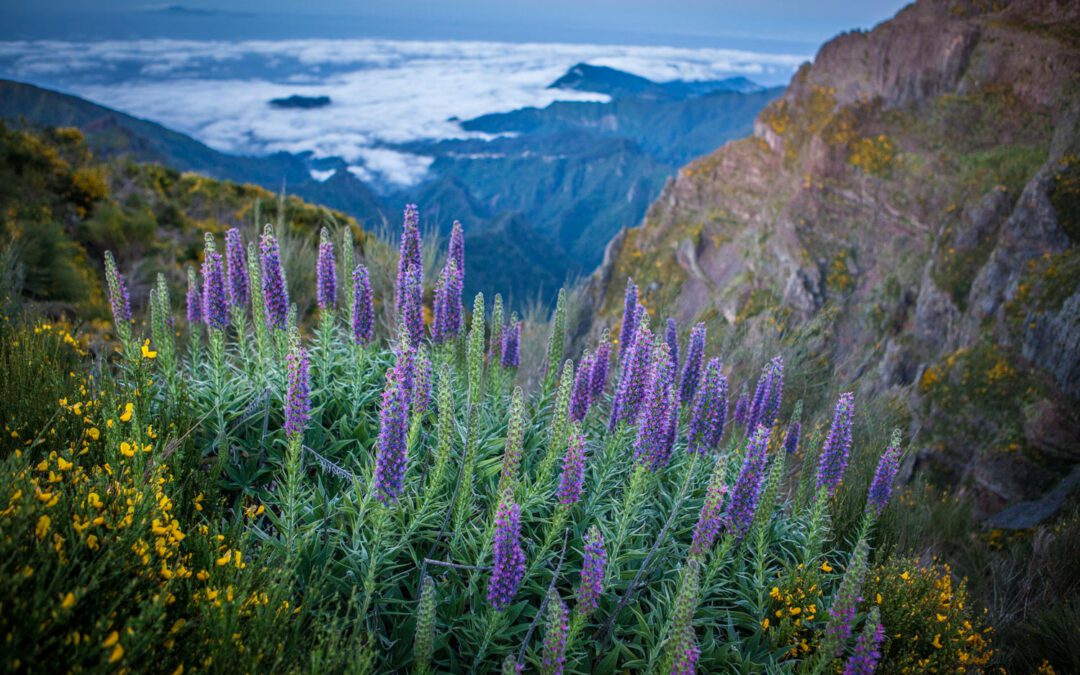Published in:

Germany’s biggest nature travel magazine
14 pages| text & photographs

„Can you please remove your document bag from the dasboard?” our guide Sukee, who picked up my wife Annette and me from Muscat airport a few minutes earlier, asks me.
He looks into my puzzled face and adds: “Sorry, in Oman there are some typical laws, nothing serious, but no objects are allowed on the dashboard under the windshield. And perhaps you noticed: stickers on the windshield are not allowed either.“
Other peculiarities: above the maximum speed limit of 120, every Omani car starts to beep.
After this specific prelude, Annette and I are curious to see what the desert state will present us with in the coming days.
One thing I can say in advance: we are going to be surprised.
Imagine opening an oven and putting your face in the hot air.
Muscat
The way to the hotel passes through the capital Muscat. No building here is higher than 12 stories. Only in the center there are footpaths. Bicycle paths are nonexistant. Everything seems strangely deserted in the late morning. “That’s because many stores don’t open until the afternoon. And are open until midnight for that,” Sukee explains.
Of course, the heat. Now in winter, the maximum temperatures are around 30 degrees Celsius. In the summer, the thermometer likes to even out to between 40 and 50 degrees.
“Imagine opening an oven and putting your face in the hot air – that’s what it feels like in Muscat,” Sukee explains.

In the historic bazaar of Muscat.
Sukee provides us with a brief outline of the sultanate: Thanks to enormous oil and gas deposits, Oman is a rich country. School, studies, doctors, hospital and all related services can be used free of charge by the Omanis. In 1990, the population was almost entirely illiterate. Today, the literacy rate of about 95% is one of the highest in the Arab world.
The prosperity is visible: The sun is reflected in the large glass facades of modern buildings, the streets are strikingly full of Japanese cars and large jeeps. The traffic is peaceful, the Omanis like to honk, but not aggressively, but just to say hello or thank you.
The island is considered one of the world’s best hotspots for whale shark watching.
Ad Dimaniyat Islands
Captain Thaleb moves the throttle of his roofed 18-passenger boat forward. Gently, it presses us into our seats. The airstream chases away the 32 degrees hot air. Muscat’s coastline recedes.
Half an hour later, sandy specs light up in the sea: the Dimaniyat Islands. The small island chain of nine uninhabited islands stretches for about twenty kilometers. It is considered one of the world’s best hotspots for whale shark watching. Unfortunately not at this time of year.
We jump into the water in snorkeling gear. Immediately we marvel at parrotfish, picasso fish and about fifteen other coral fish species.
Below me a hawksbill turtle floats through the water. I follow her. While she advances with a few effortless paddle strokes, I have to clumsily struggle to keep up with her. Up to 400 hawksbill turtles nest on the islands, making this one of the largest colonies in the world for the endangered species. At one point, a larger group of hawksbill turtles plucks sponges from the reef. I count sixteen specimens. We marvel at this silent, beautiful sight for a few minutes.

Return to our excursion boat in a bay of the Ad Dimaniyat Islands.
Time for a lunch break. We go ashore in a small, shallow bay. The islands are largely barren, sparsely covered with vegetation and without freshwater resources.
The last in our line is Thaleb, who works for the tourist office. He cautiously wades behind us through the chest-high water and, visibly moved, joins us in the shade. We hear: this man in his mid-thirties has just been in the sea for the first time ever.
Days at sea work up an appetite. Sukee takes us to the Rozna restaurant in the Muscat neighborhood of Shatti Al-Qurm. From the outside, it looks like a defiant desert fortress. Many local visitors feast on traditional cuisine here.
The men wear the collarless, ankle-length Dishdasha robe complete with Kuma head cap, almost all the women are veiled with hijab and wear high-collared, long-sleeved abaya robes, which are often embellished with colorful embroidery.
Camel meat is an important component of Omani cuisine.
Tumaric and salt are served as condiments with our dishes, including ‘shiwaa’, goat. Rice, meat and vegetables are wrapped in banana leaves. These preserve the flavor, they say.
The surprise of the evening and nothing less than a revelation for meat lovers: camel meat. Camel meat is an important component of Omani cuisine. The meat is low in fat, high in protein and has a unique flavor.
A popular Omani dish is called mashuai. It is prepared in a special oven. Before that, the meat is rubbed with a mixture of salt and spices. The result is tender, juicy meat with a unique, smoky flavor.

Hamid, Sukee and I are ready to descend into the ‘7th hole’ cave system.
Climbing training in Wadi Mayh
The whole day is reserved for our climbing training as absolutely necessary preparation for the visit of the cave system called ‘7th hole’ the next day.
The AMC streched pickup drives Annette and me to a very dusty canyon called Wadi Mayh. Climbing and caving guide Hamid shows us two ropes that go up the rusty red rock face for about twenty meters.
During the next hours we will learn how to use different climbing tools, techniques for ascent and descent and how to conduct oneself in emergency situations.
With the descender we can come down in a controlled way, it slows down the speed of descent on the rope. The ASAP (Assisted Safety Attachment Point) secures us during ascent or descent.
Thanks to the ascender we can climb up the rope. At the same time, the rope clamp secures the rope. And the cowtail, a short belay line, provides additional protection when belaying to the rock.
„Repetition is the master of all skills.”
In addition to lots of theoretical input, Hamid keeps shooing us up and down the ropes. “Repetition is the master of all skills.” Hamid laughs. This drill is meant to help us memorize handholds and foot techniques as best as possible. If only it weren’t for the blazing afternoon sun at over thirty degrees.
After the strenuous procedures, Annette and I are mentally and physically exhausted. Meanwhile it is dark. We set off for our night location.
Hamid steers the streched DMC up a winding, steep mountain road. Our destination is the Salmah Plateau at 1,400 meters above sea level. There we want to enter the cave tomorrow morning.

Hamid at the campfire near the cave system. In the background a wild donkey.
At the top, on the plateau, we take a short rest. Within a few minutes the thermometer dropped from 26 to 18 degrees. “It’s going to be even colder tonight,” Hamid comments, “I would say 10 degrees.”
Half an hour later, we reach our night camp. We set up tents and campfires in the light of the full moon. No one here but us. No traces of civilization are discernable.
Only a few meters besides us, a huge crevasse cuts into the flat, boulder-strewn plain. “Please never go closer than two meters to the edge of the crevasse,” warns Sukee, “It can be unstable and brittle there. Unless your want the fastest way 200 meters down to the bottom.“
„Don’t leave your shoes outside. Sometimes foxes come by and chew on them.“
Sitting around the campfire, fatigue creeps into our limbs. That’s when we spot two pairs of glowing eyes slowly approaching. “Oh no!” groans Hamid, “Wild donkeys! They can get very loud and annoying at night.”
Before we crawl into our tent, Sukee gives us a tip, “Don’t leave your shoes outside. Sometimes foxes come by and chew on them.” Fortunately, the night’s rest passes without incident.
Descent down to the cathedral
The 7th hole cave system consists of several entrances, shafts and tunnels leading into the depths. The cave itself is several kilometers long, has numerous branches and narrow passages through which one must crawl.
The name ‘7th hole’ refers to one of the branches in the cave system, known as the ‘seventh entrance’. This is where we want to enter.
Already at the campsite we gear up for the descent into the cave: harness, ropes, climbing tools, backpack, lamps and helmet.
After a twenty-minute walk we reach the shaft that leads down the first eighty meters. Daylight penetrates through many openings and crevices, the cave lamps remain switched off.

The highlight of the cave excursion: the approximately 200m high cave chamber, also called ‘cathedral’.
Now we will see if Annette and I paid attention yesterday. Before me Sukee descends to guide me if necessary in difficult places from below. After me follows Hamid. I take it slow and concentrated.
Half an hour later we reach the end of the rope at a depth of about 100 meters. It is still daylight, the rock formations and patterns present themselves in the best of light.
We walk and scramble to the next shaft, where we lower ourselves another 100 meters. It gets darker. At one point, shortly after I reattach myself to a continuing rope, I can’t abseil any further. One of the many ropes attached to me is completely taut. I am stuck.
With Sukees help from below, I analyze the situation, climb back up one meter and secure myself. 100% concentrated, I rehang equipment, untie ropes until everything is sorted again. Hopefully. Slowly I lower myself down again. Phew! Everything runs smoothly again in the truest sense of the word.
The world looks completely different here.
Then finally – after an exhausting 100 minutes – we reach the bottom of the cave. We enter a cathedral of stone.
The sun is high, its rays illuminating one wall of this gigantic room. Sukee stretches out his hand and points to the crack in the ceiling, about 200 meters above us: “Up there, just 20 meters to the left, that’s where our campsite is.”
I can hardly believe it. After what feels like hours of toiling, we are now standing in the same place as last night, only 200 meters lower.
The world looks completely different here. An underground wadi, deserted, a terra incognita in which the senses are extremely sharpened. To make the dimensions somewhat tangible, I place Hamid and Sukee as reference points in my pictures; otherwise the motifs would show as abstract graphical art.

Our night camp on the Indian Ocean.
Hamid points to an opening in the wall: “We’ll climb right in there. Because we don’t want to go back the same way.” Behind the hole, a narrow tunnel opens up, and we stoop to work our way through. Now the helmet lights help.
“Look here,” Hamid says, pointing to a small alcove in the tunnel, “a few years ago, two cave climbers held out there until the water receded.” What water, please? Hamid explains that now, in the dry season, the cave is something like a dried-up riverbed.
But in the rainy season, underground water sources can cause the cave to fill up with water in a short period of time. This is exactly what happened to the two cave climbers, who then sought out this higher escape spot until the danger was averted.
The 7th hole is a fascinating as well as breathtaking cave system.
At the end of the tunnel and another minor rappel, we reach the end of the easy part. Now we have to climb the entire way back up on the rope.
Actually it means pushing the ascender attached to the rope up the rope, then doing a combination of pull-ups and squats. And repeat. Until we are back at the exact spot where we started. We needed five hours.
The 7th hole is a fascinating as well as breathtaking cave system, which draws very few visitors. It is a unique way to explore the beauty of Oman’s underworld, and both a mental and a physical challenge.

Sunrise on the Indian Ocean.
Close to the moon
„Salalah means garden city. But soon we’ll be deep in the desert. And you won’t forget it!” promises Ali Al-Shahri, our guide for the coming desert days.
We can’t imagine a better representative of the country. Almost every sight and dish is exuberantly praised with the terms “Magnificient, fascinating, amazing, better than wow.”
Ali is married to two wives and is the proud father of three girls and seven boys ranging in age from ten to twenty-eight. “And, God willing, there are still plans for the future!” he laughs.
His eldest sons have already embarked on careers as lawyers, PhDs and IT experts. He himself worked for an international bank for over 25 years before switching to being a tour guide.
„People used to think up here that no one lived closer to the moon than they did.”
We leave Salalah and our driver Ali, one of our guide’s best friends, steers the SUV towards the ‘Mountains of the Moon’, as the up to 900 meters high elevations are called by the locals. “People used to think up here that no one lived closer to the moon than they did. On clear days, you can see 30 kilometers in all directions here.“

The desert forms beautiful ephemeral works of art.
Cutting until the resin comes
Ahmed Amir Alawaid stands in the shade of an incense tree that is about 200 years old. “This tree was already tended to by my father. And my grandfather.” Alawaid is the head of the Frankincense Tree National Park, where some 5,000 Arabian frankincense trees grow up to 7 meters tall.
Oman is considered the cradle of frankincense. It is famous for its unique fragrance and medicinal properties. Here, in airy and monsoon-warm and humid heights, the costly trees thrive like nowhere else.
“I use it like gum for cleaning my teeth.“
„Some trees even live up to 800 years,” continues Alawaid, “In Oman, we use frankincense in mosques, homes and stores to give off pleasant fragrance and ward off evil spirits.”
Ali adds, “It also helps with prostate pain, asthma, digestive problems, inflammation. I personally like it in the house, as smoke it drives away insects. And I use it like gum for cleaning my teeth.”
Many healing properties have been scientifically proven. Moreover, it does not spoil; during excavations, 600-year-old incense was found still working.
Alawaid pulls out his knife and demonstrates how frankincense is harvested, however, it is not harvest season now and the tree remains undamaged: “First, the tree is slightly scratched so that resin can escape. After about two weeks, the dried, low-grade resin is removed.
Only after further cutting and drying is high-quality resin harvested, cleaned and processed.”

Ahmed Amir Alawaid in the shade of a 200-year-old incense tree.
This tradition is over 6,000 years old. Even the holy three kings gave the Jesus family the then extremely precious incense. One kilo, it is said, was balanced out with one kilo of gold.
Remains of incense resin were found in Tutankhamun’s tomb, and many a Roman emperor, including Nero, appreciated the fragrance, which reminds many Western Europeans of Christmas.
Alawaid further explains, “The lighter the resin of frankincense, the more valuable it is. The most precious resin we call Royal Hojari. It is the world’s purest, brightest, and arguably most expensive incense.”
“Nature is simply the best pharmacy.“
The value of the entire tradition was also recognized by UNESCO. The site has been a declared UNESCO World Heritage Site since the year 2,000.
On the way back to the car, Ali enthuses, “Ahhhh, incense. Nature is simply the best pharmacy.“
Set in sand
For hours, my eyes register only two sets of colour as soon as I look out the window: blue above, the sky; light brown below, the endless sandy plain . In between, dunes rise on the horizon.
From time to time, a few green bushes flit past our off-road vehicle close by. Distances and dimensions dissolve.
Annette and I doze out the window, dreaming ourselves into the seemingly endless world of dunes in the world’s largest contiguous sand desert, the Rub al-Khali. Not for nothing is this part called the ’empty quarter’.

Camels in the largest continuous desert in the world, the Rub al-Khali.
There, dark spots on the horizon. They seem to be moving. They are camels. As we approach them, Ali explains, “For 4,000 years, the Bedouins have lived here with their camels. They ensure their survival in the desert. They are amazing animals. Their wide feet do not sink into the soft sand. Without grumbling, they carry 300, sometimes 400 kilograms.
They store 40 kilograms of fat in their humps, from which they can live for months. When they find water, they can drink 150 liters in half an hour. And, you try this: in desert storms they can completely close their nostrils, haha!” Suddenly we are wide awake, because once again Ali’s enthusiasm has infected us.
These are geodes, roundish rock bodies with a crystalline inside.
Suddenly, driver Ali stops the car, gets out and seems to be looking for something. After two minutes, he returns with two palm-sized, closed stone balls. He knocks them against each other several times.
One sphere breaks open. Inside, a mineral fossil substance in both halves, now seeing the light of day for the first time, after tens of thousands of years.
These are geodes, roundish rock bodies with a crystalline inside. They were formed by the cooling of lava and are an indication of volcanic activity in the region.
Simply fascinating, what’ wonders this desert has to offer.

Only a short time before, the mineral, fossil substance of this hollow rock sphere called geode saw the light of day for the first time.
We continue our journey, deeper and deeper into the sandy no man’s land. The sun is setting, the shadows are getting longer and the colours more intense.
Annette and I climb a gigantic nameless dune. Three steps up, two steps back.
At the top, all we hear is the throbbing of our hearts from the exhausting climb and the rustling of millions of grains of sand as the wind churns them around. All the way to the horizon only a sandy nothingness. No traces of civilization except those of our jeep.
After sunset, the wind also disappears and on this Antarctic of sands settles a mystical silence, unchanged for millions of years.
They still exist, the untouched places. Inhospitable. Uninhabited. Unbending. Sometimes dangerous if you don’t know your way around. People get lost again and again, including locals. The Rub al-Khali is about 1.5 times the size of Germany.
A geological nirvana.
It extends deep into Saudi Arabia and in the east to the glittering metropolises of the United Arab Emirates. In the south, the Indian Ocean forms a natural border. In between, emptiness reigns. A geological nirvana.
But this wasteland, that void, that is the special splendor, the real wonder in an age of overabundance. A healthy escape for people.
A place of humility and nothingness, where one can let oneself be enchanted and come to oneself.

In the middle of nowhere in the Empty Quarter.
Weeks after our return, Annette and I still enjoy the ‘stowaways’, the involuntary souvenirs, the smallest pieces of the great Oman.
They trickle out of suitcases, equipment and trouser pockets and evoke comforting memories:
They are grains of sand.
Read now:

Pure inspiration
My new media kit 2025
< 1 Min.In this brand new 28-page media kit, I show you my work as an adventure journalist and speaker: Expeditions, travels, challenges – everything that excites me. Let yourself be inspired.

Unique insights into a desert country
Oman photo gallery
2 Min.Breathtaking desert landscapes, impressive mountain ranges, exuberant hospitality and delicious food. Oman offers it all. I ventured deep into the ‘interior’ – the 7th Hole cave on the Selmah Plateau is quite something.

Where you can experience your green miracle
Madeira – 50 Shades of Green
23 Min.The sister islands of Madeira and Porto Santo are each beautiful in their own way and have much to offer nature lovers: fantastically dense laurel forests, countless hiking trails of any difficulty and lush flora.
